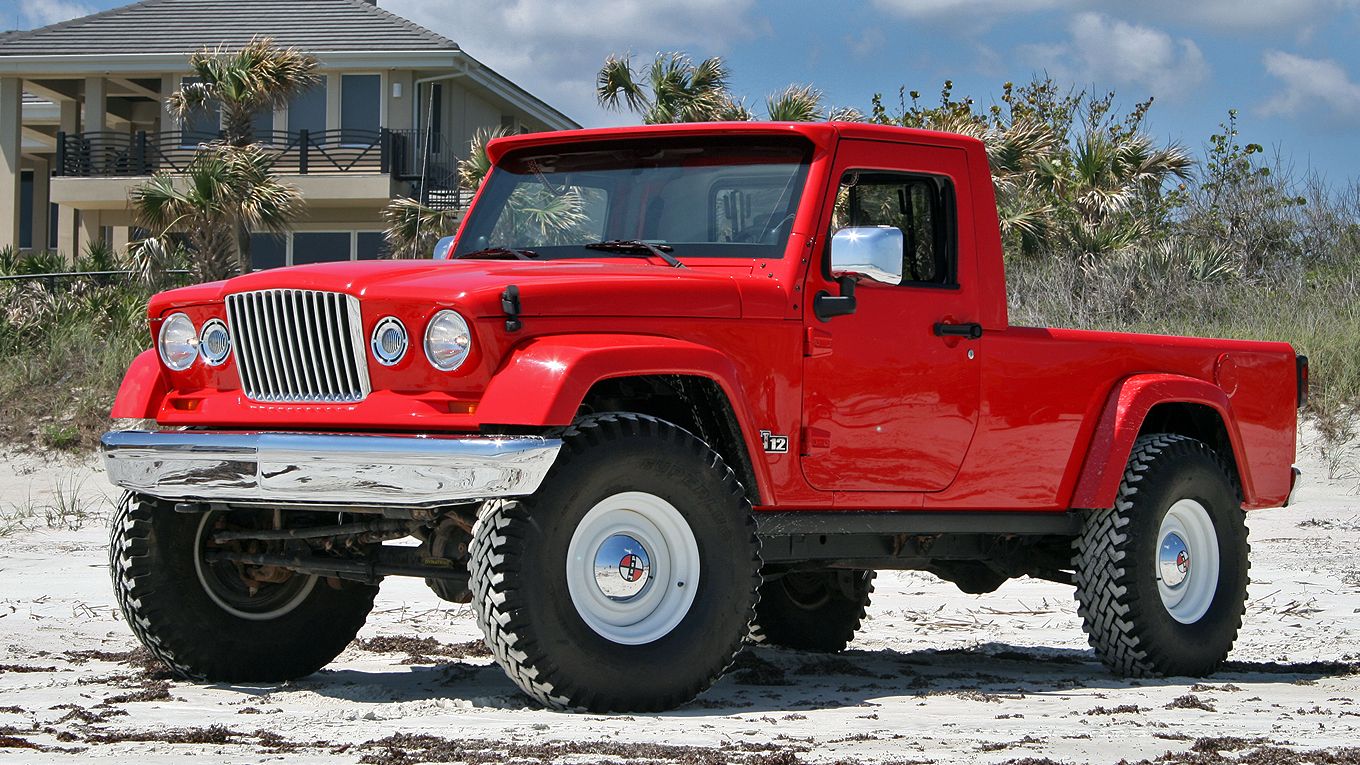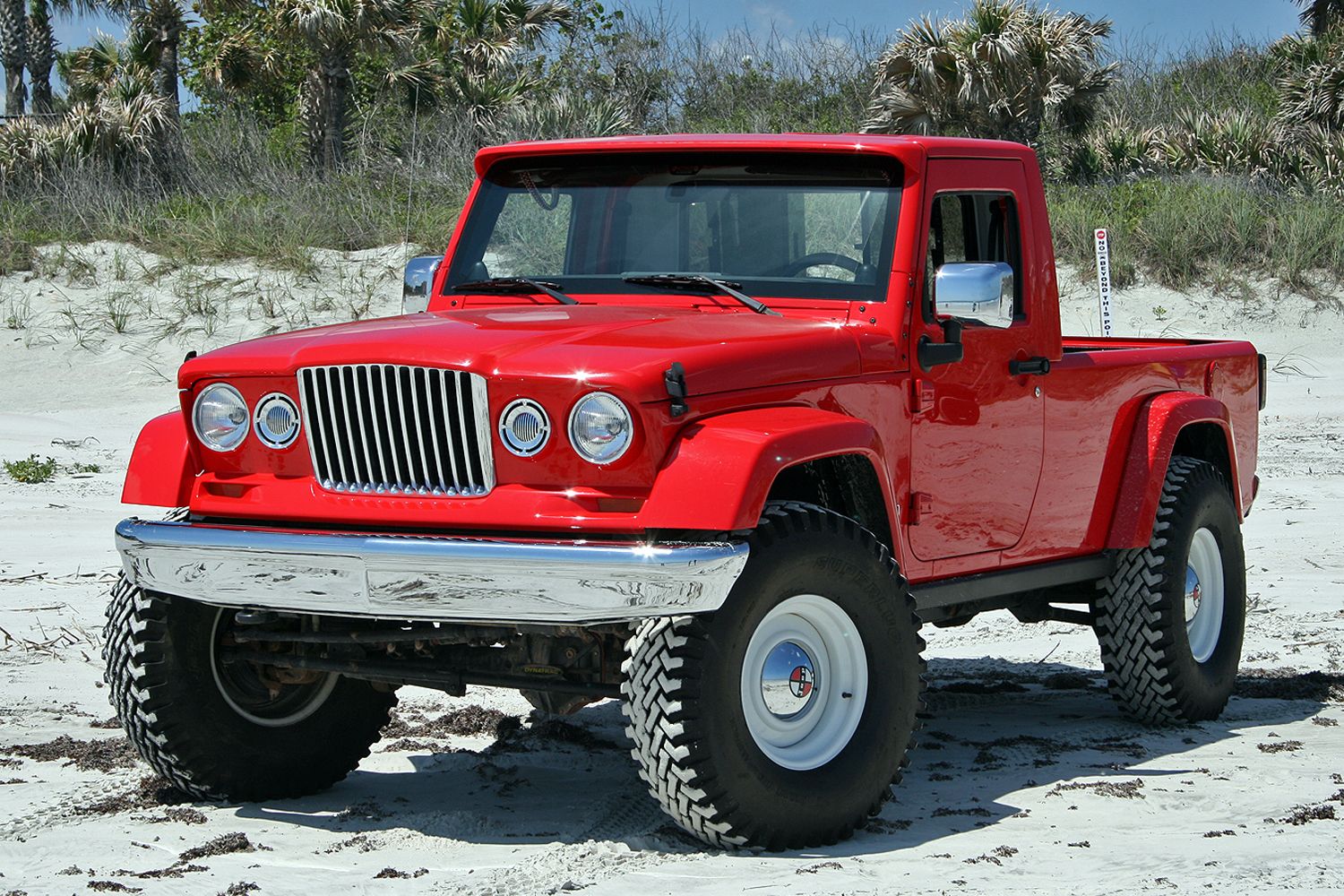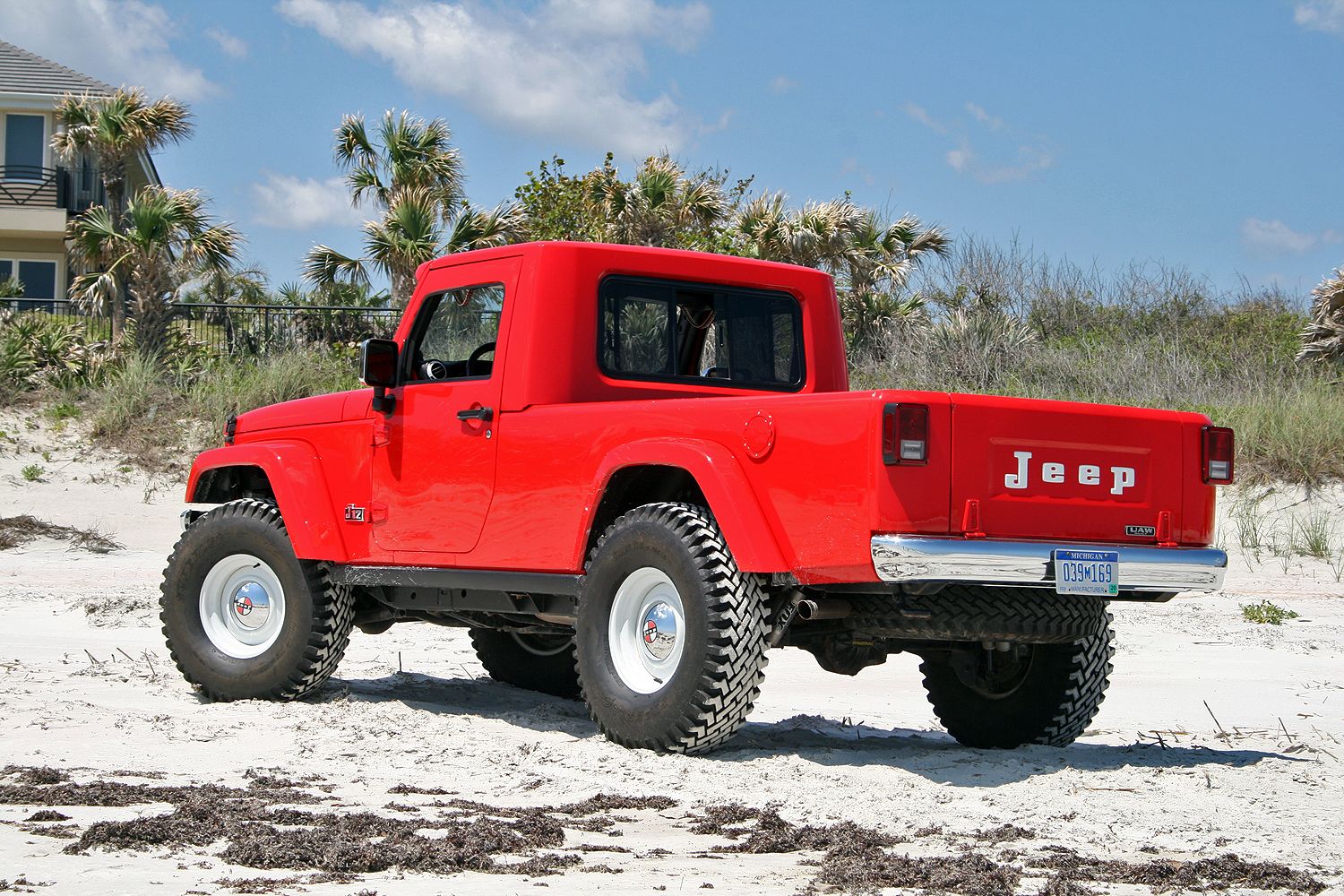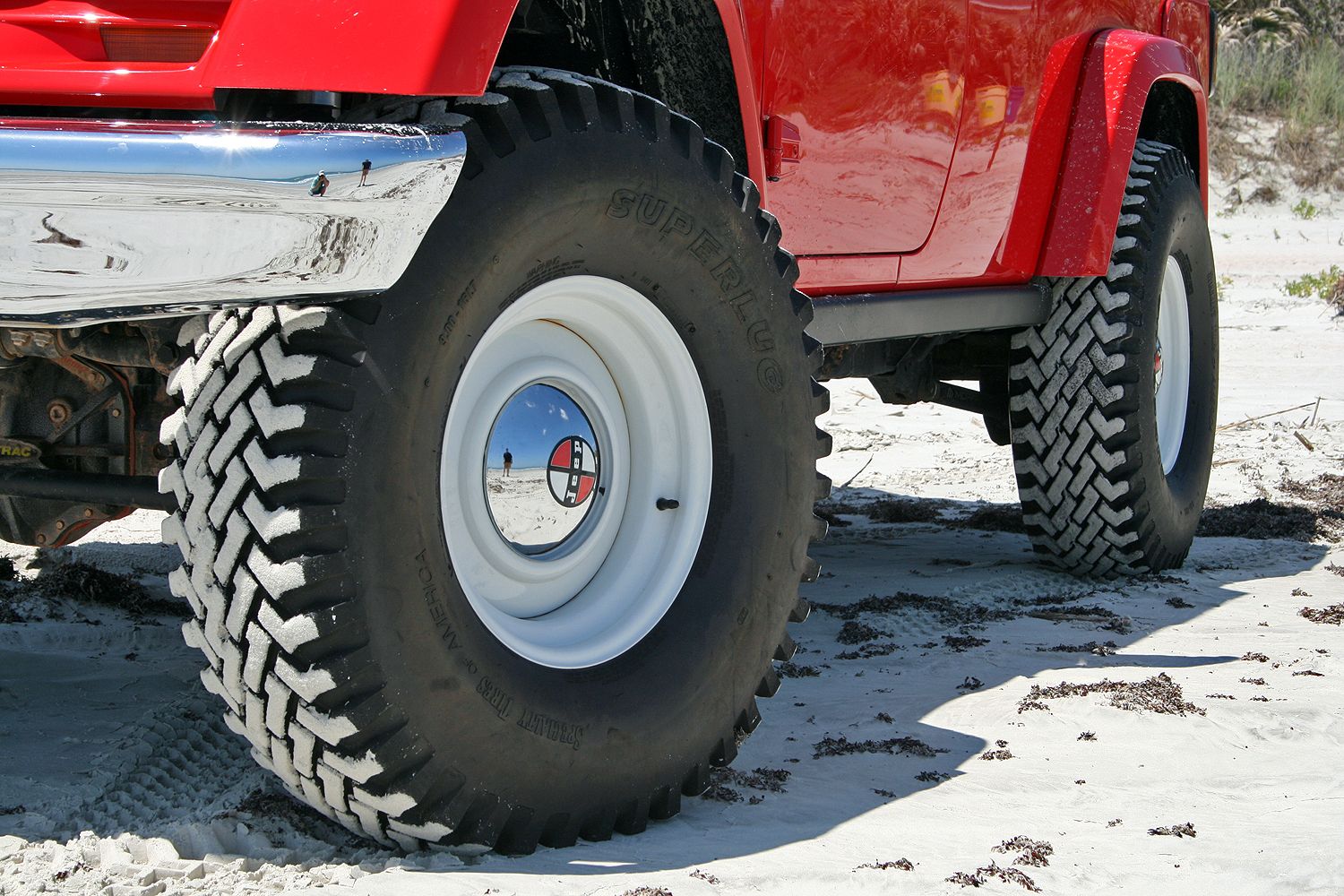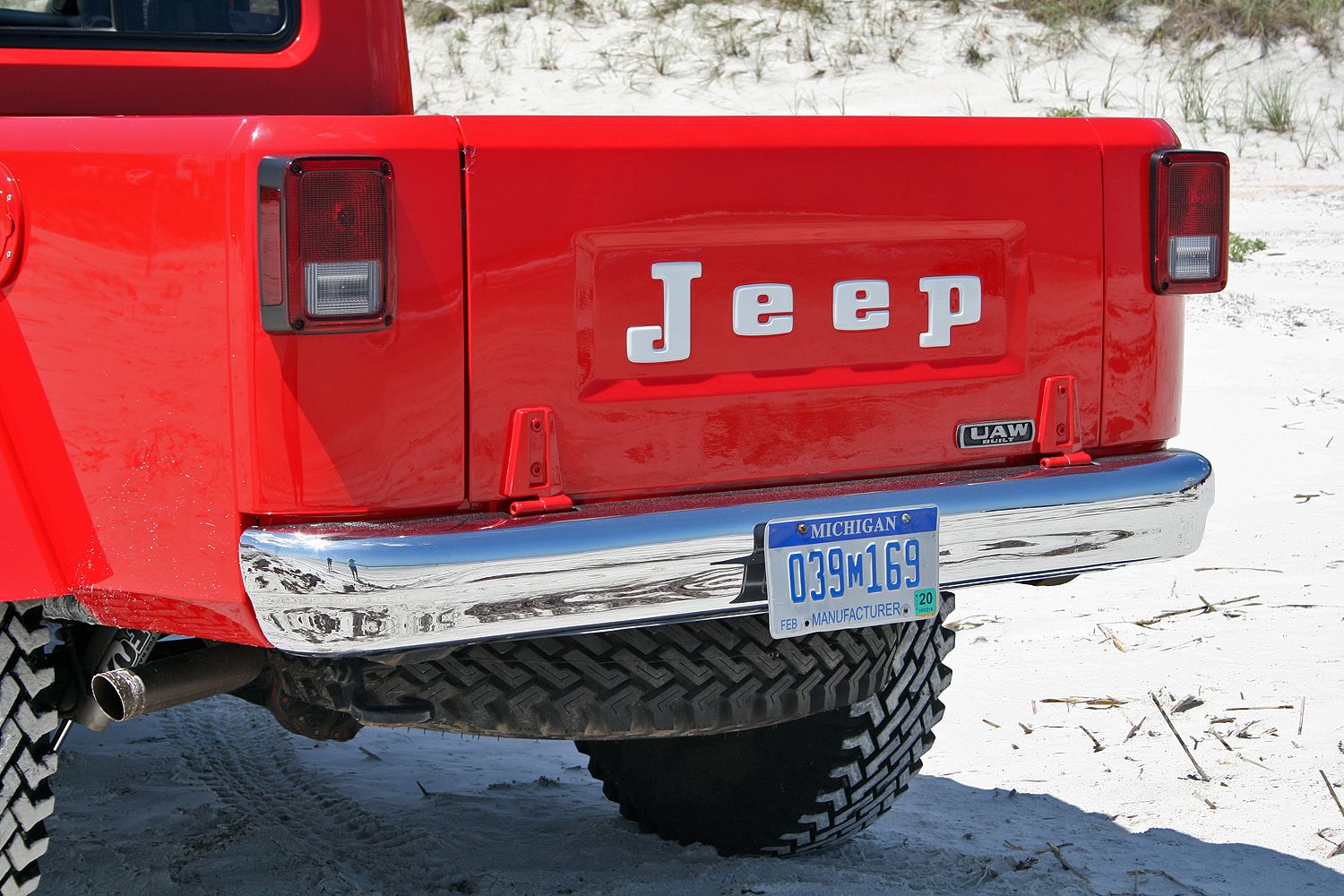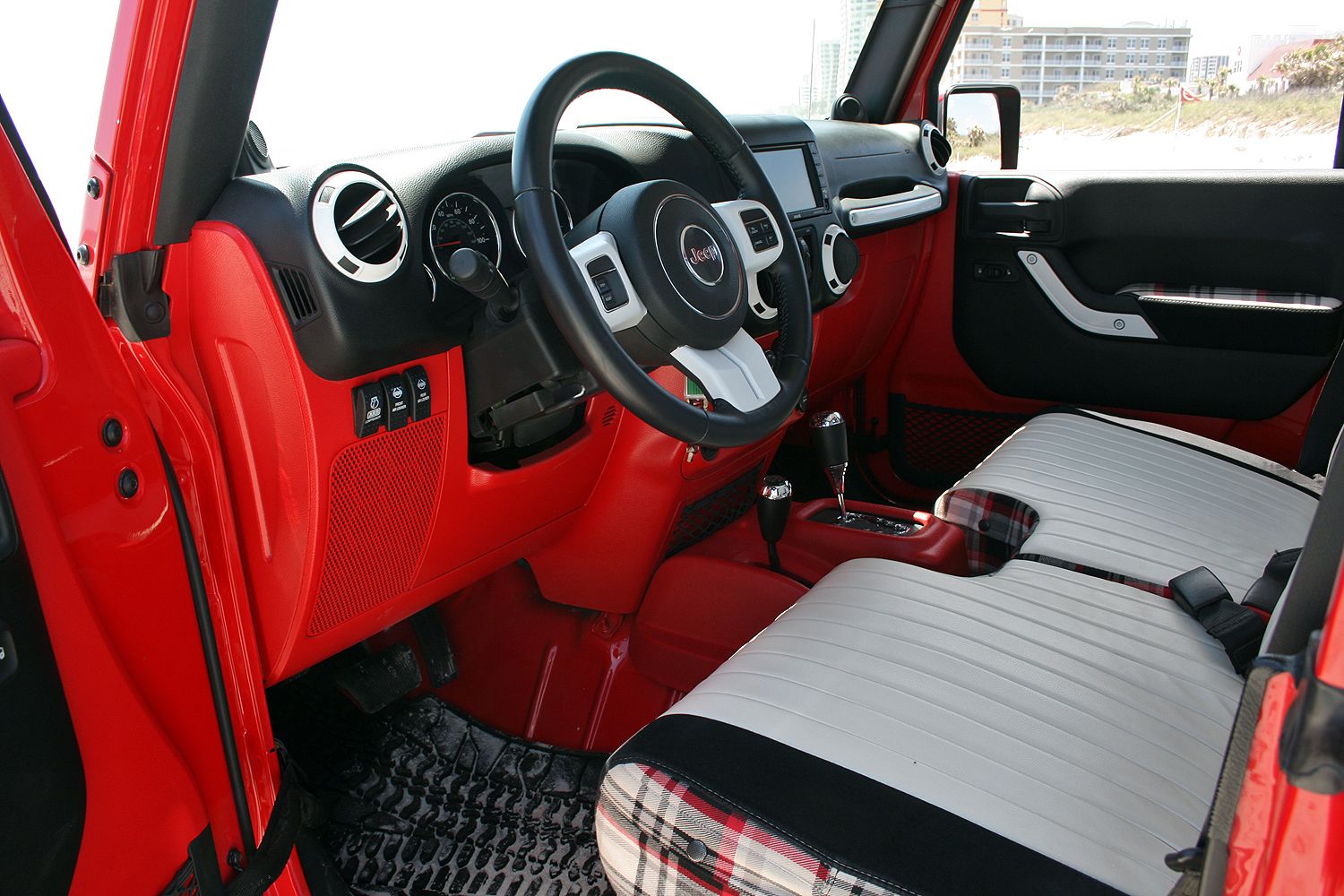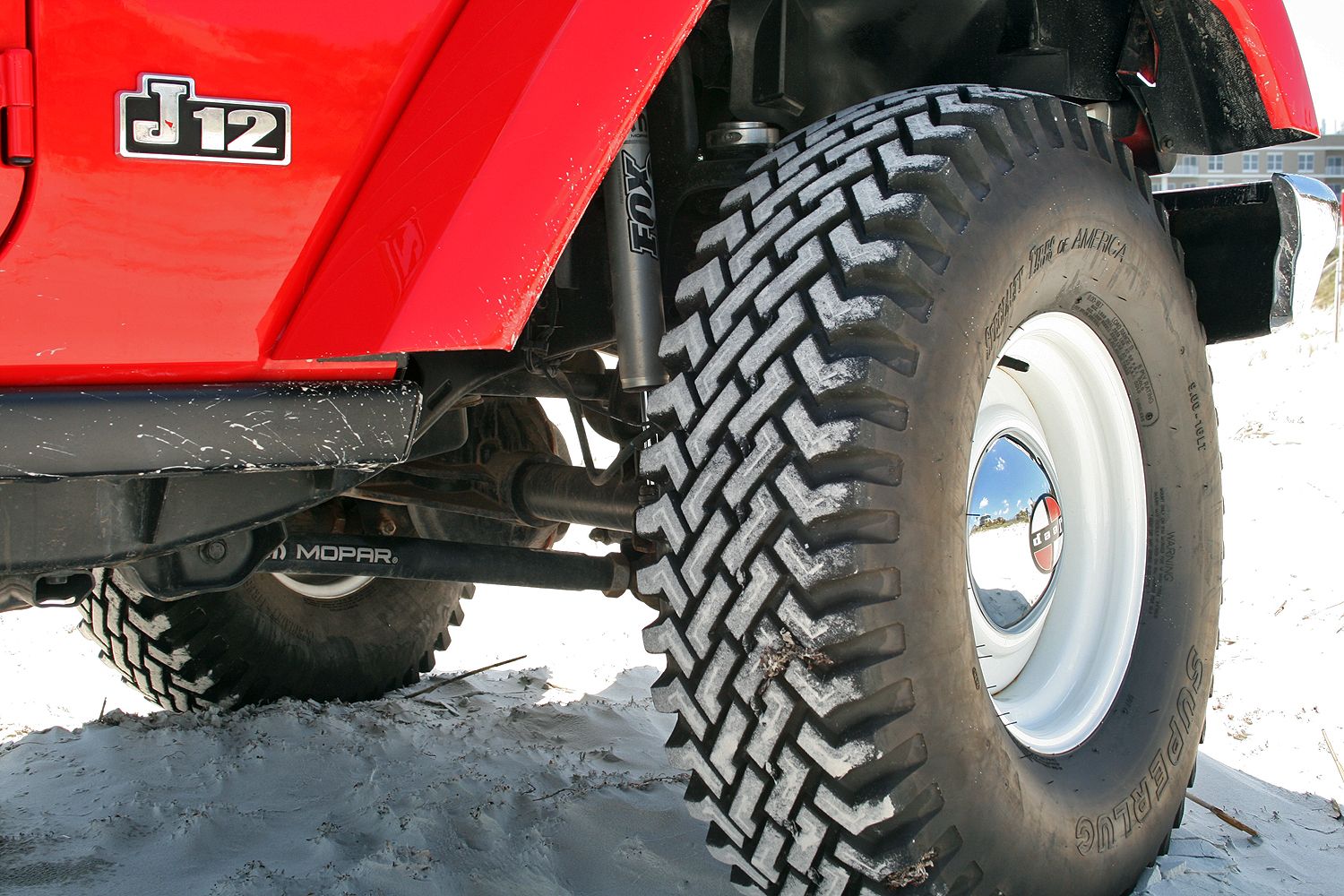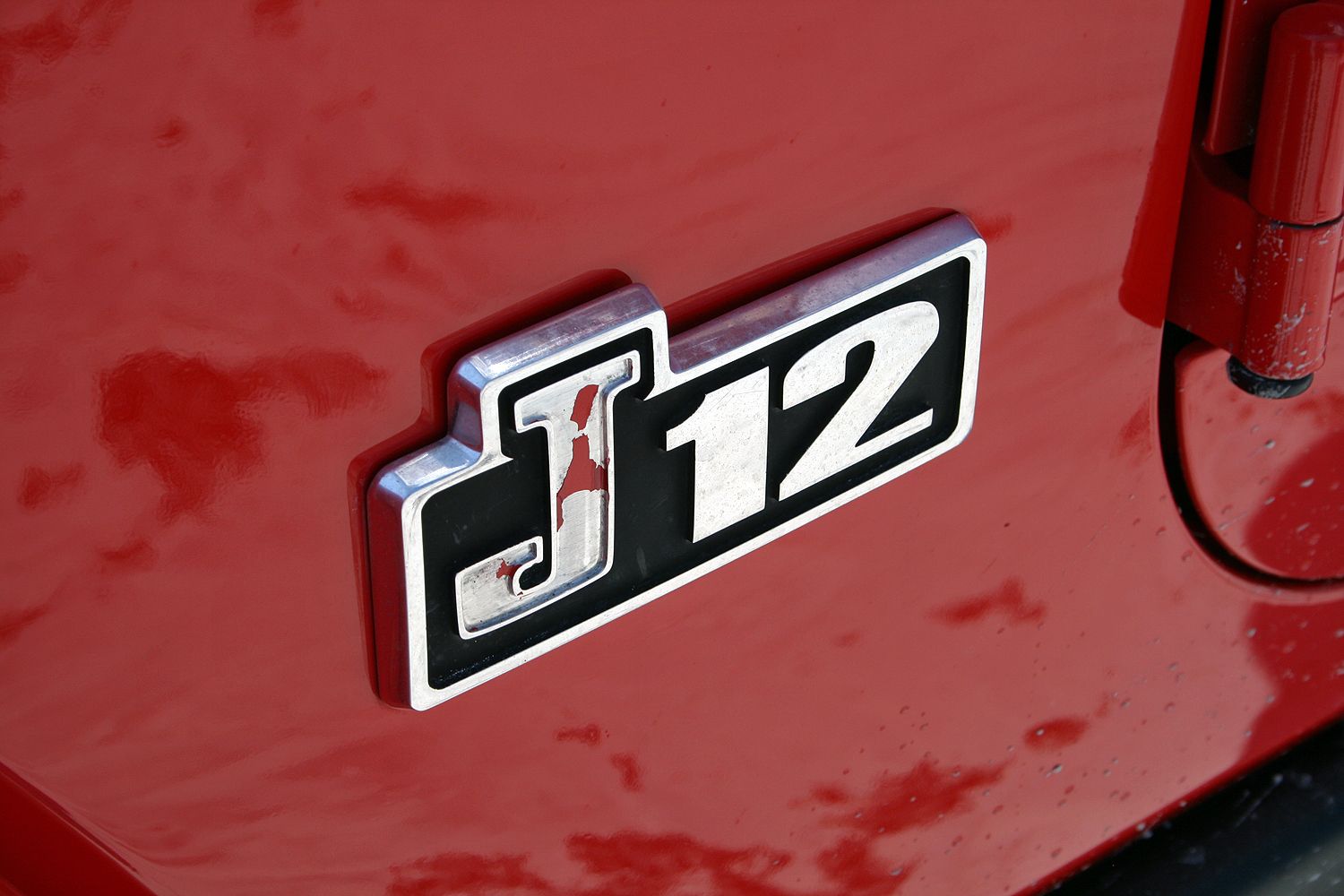Jeep Beach 2017 in Daytona, Florida was packed with Wranglers all driving along the Atlantic’s edge. A handful of XJ Cherokees and ZJ Grand Cherokees could be found scattered about. Jeep’s marketing team even brought two of its newest concept vehicles to show, the WWII-style 75th Salute and the 392-powered Quicksand. But parked in between as this, the J-12 Concept from 2012. Built to recall the first-generation J-series Jeep pickups from 1962 through 1971, the J-12 appropriately looked four decades old. From behind the wheel, however, this one-off concept proved it was far more modern hardware.
The J-12 not only looks amazingly retro, but it does a fantastic job at teasing Jeep enthusiasts who desperately long for the return of Jeep pickups. As of late April 2017, Jeep has all but officially debuted the next-generation Wrangler and its pickup variant. Little is know about the upcoming pickup, but we seriously doubt it will come dripping with such Mopar history. On par with stories from the past is the interesting tale of the J-12 concept and how it came to be.
Continue reading for the full story.
The J-12 concept got its start in preparation for the 2012 Easter Jeep Safari in Moab, Utah, an annual event attended by thousands of enthusiasts. Recent years have seen a heavily involved Jeep corporate, with the automaker crafting concepts just for the event.
Under the carbon fiber skin, the J-12 rolls on a Wrangler Unlimited chassis. It’s hardly stock, though. Jeep stretched ladder frame 18 inches in order to accommodate a six-foot cargo bed and a full-size 36-inch spare tire between the rear axle and bumper. The cargo bed was fabricated from two JK-8 pickup bed conversion kits, which are actually sold to everyday customers though Mopar.
The front clip is anything but standard. Jeep’s design team actually fabricated the front fenders, hood, and grille from carbon fiber. The design itself was created by scanning the front of a J-series pickup owned by a Jeep engineer. The digitized front clip was scaled down to fit atop the Wrangler’s frame while using the standard mounting locations and hardware. The Wrangler’s cab is modified with the Gladiator’s over-the-windshield brow and low-opening windows. The roof is also from the JK-8 pickup kit, but was modified for the J-12.
The retro looks continue with the old-school bias-ply tires. They are STA Super Lug tires from Coker and are actually off-the-shelf parts designed for restoration projects. The skinny tires are mounted on white-painted steel wheels complete with a dog-dish, chrome hubcap with the Kaiser-era Jeep logo. The same wheel and tire combo is used for the spare tire. Other retro pieces include the chrome bumper, the J-12 fender badges, and the handsomely designed tailgate. It uses standard JK door hinges for folding, but utilizes a custom latch system. JK taillights finish off the J-12’s exterior.
Jeep designers didn’t let the Wrangler’s interior go unchanged, either. The donor Wrangler as a Sahara package, meaning it came with the touch-screen radio, power windows, power door locks, power-operated mirrors, and heated seats. None of those attribute were lost, however the seats have obviously changed to match the J-12’s theme. The Wrangler’s standard front buckets were modified into a bench configuration, with a shorter backrest. White vinyl, black cloth, and an awesome flannel-style pattern cover the seats. The flannel pattern is uses again on the door armrests. Matching the white vinyl, white plastic pieces accents the steering wheel, dash, and door pulls. Designers even painted the lower half of the dash and door panels to match the J-12 exterior.
The Wrangler’s greasy bits have been modified, too. The standard Dana axles were swapped with upgraded Dynatrac units, with the front getting a D-44 and the rear getting a D-60. Differential internals include ARB air lockers for serious off-roading. A Mopar three-inch lift lit gives the J-12 some added height, and affords the 36-inch tires some room to roll. Teraflex anti-roll bars are the quick-disconnecting type, for increased articulation and custom driveshafts from Tom Woods connects the drivetrain together. Under the hood, the standard 3.6-liter Pentastar V-6 was left alone. The same is true for the five-speed automatic transmission and part-time transfer case.
Behind the wheel, the J-12 feels like a regular Wrangler Unlimited. The view over the windshield is the strangest part, second to the bench seat and the cargo bed looming in the rearview mirror. A rack mounted over the rear window holds guns and fishing rods – both suitable accessories for such a pickup. Even Jeep’s marketing folks say the J-12 is an old man’s truck. It embodies that Clint Eastwood attitude of “Get off my lawn.” (No wonder there’s a gun rack.)
Slipping the five-speed into drive, the J-12 moves forward without issue, despite the loose sand along the Daytona shoreline. The throngs of enthusiasts parked along the beach stopped and turns, many with cell phones in hand and mouths agape taking photos. The J-12 certainly attracts attention. Sadly, Daytona’s rather strick 10-mph speed limit put a damper on driving past second gear. Nevertheless, the J-12 felt perfectly at home cruising along, its Fox Racing shocks and remote reservoirs soaking up the wind-swept washboards in the sand.
The J-12’s pissed-off and callous attitude is infectious. The more time I spent with it, the more my inner Walt Kowalski came out. I felt like grabbing my M1 Garand and sipping a few Pabsts on the front porch. Maybe I’d scare the local hoodlums; maybe not. And while it’s probably not what Jeep was going for, rarely does a vehicle capture a character so well. The original Gladiator pickups did the same. I can’t help but see a stern face, angry at the world, in the Gladiator’s grille.
While it’s a near certainty Jeep will launch a pickup version of the next-generation Wrangler, it’s highly doubtful its design will take after the Gladiator pickups, or be offered in a single-cab, long-bed configuration. Count on the same front-end styling as the Wrangler SUV, four doors, and room for five. It only makes sense, seeing as most pickups bought by average consumers are crew cab, short-bed models. The Jeep pickup’s target audience, by and large, will be families and urbanites wanting a bit more utility or simply something different.

